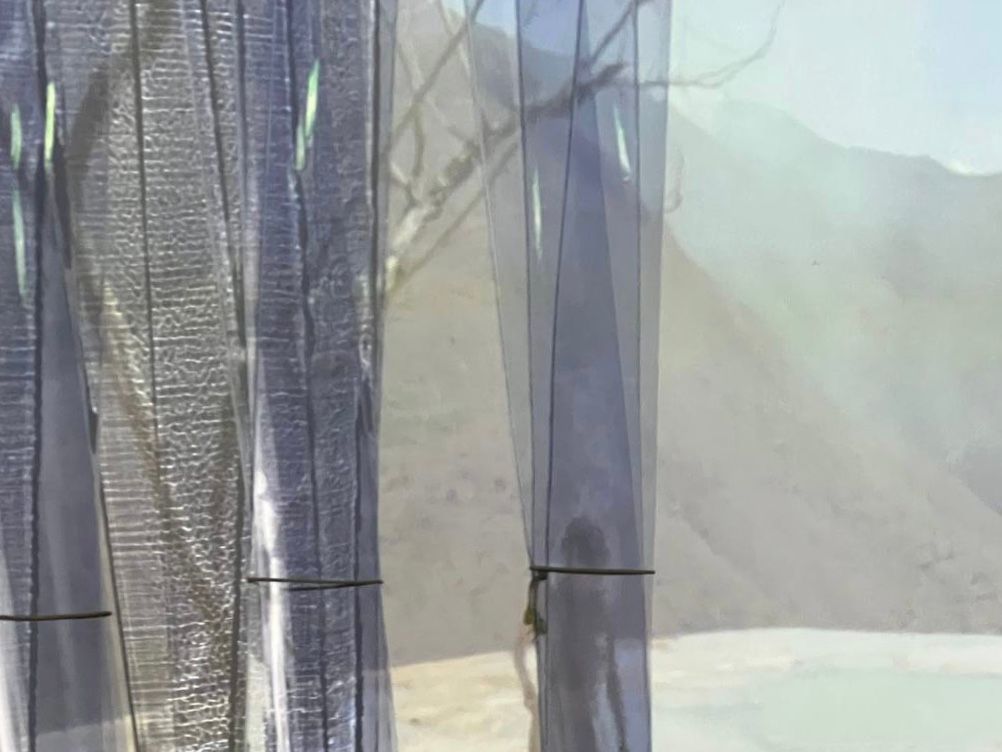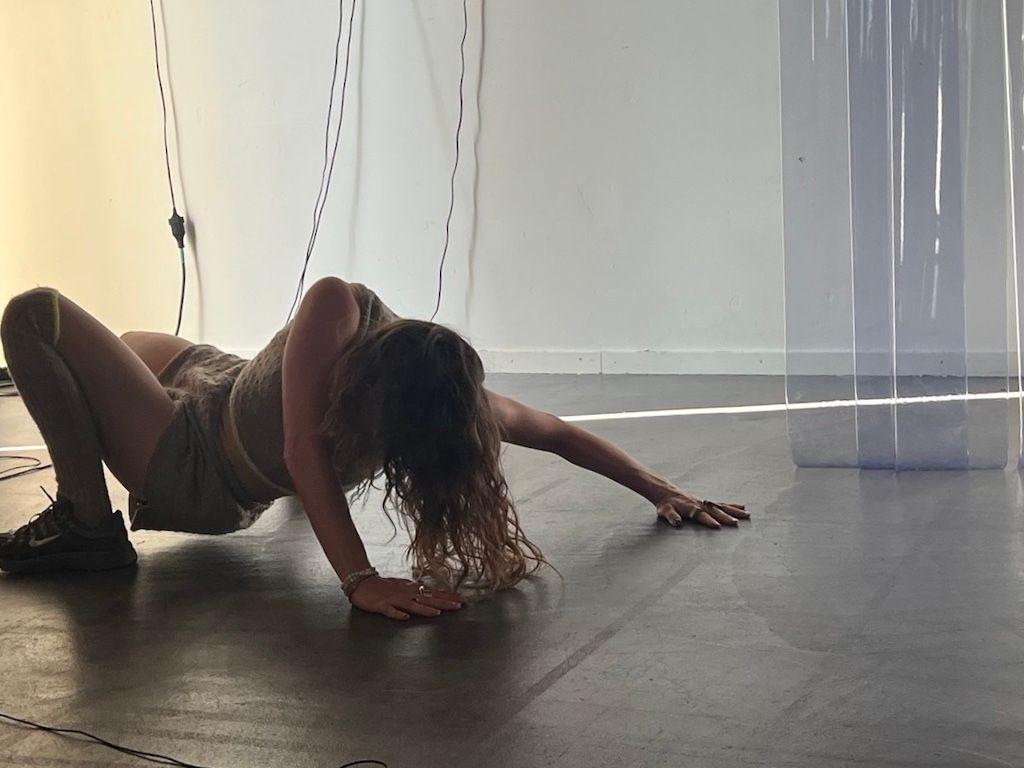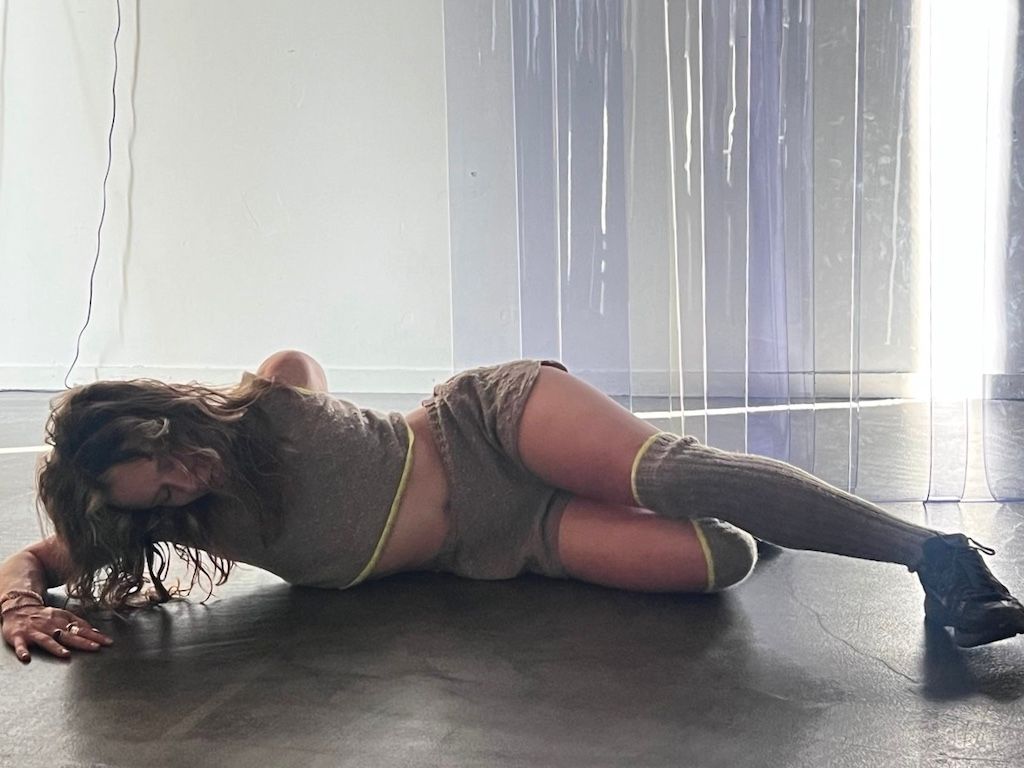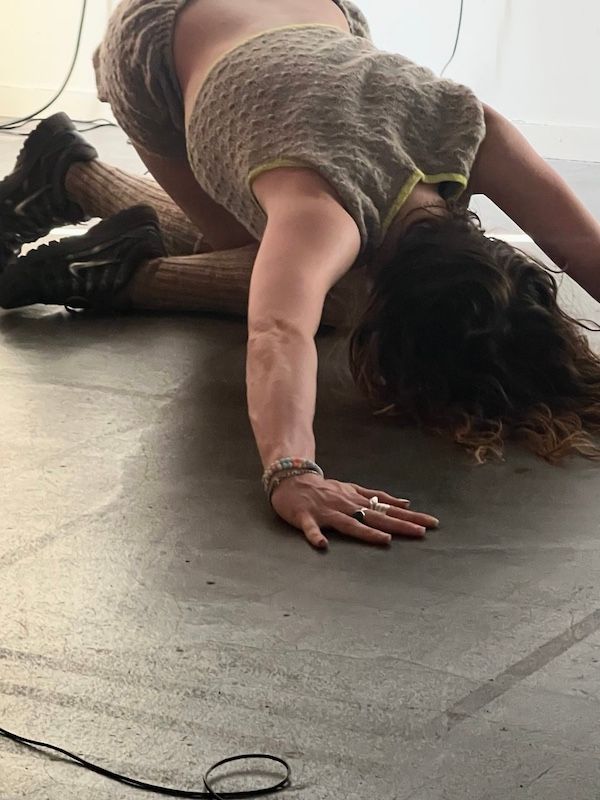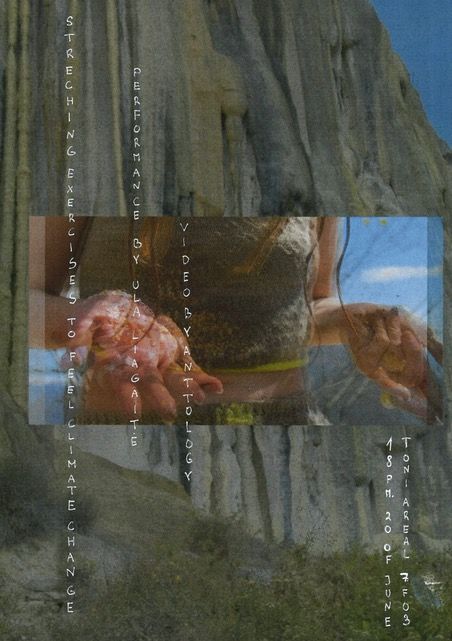What is seen
First exercise: An Attempt on Weathering the Waterfall, an audiovisual installation + performance as part of the Annual Diploma Show of the MA in Transdisciplinary Studies at ZHDK (May 2025).
The work explores embodied and collective modes of sensing environmental crisis and engages with the temporal and emotional dimensions of climate change. The performance takes place within the audiovisual installation created during a research trip to Oaxaca, Mexico in early 2025, together with a Anto Logy.
In the video, next to the waterfall, a human figure is seen, dressed in a way that camouflages and merges with the rocks. The video is edited in loops of multiple lengths, breaking the movement of the figure, as it tries to find its way on the rock.
<...> climb up, try to get close, look for a way to be close, get humbled by its magnitude and solid performance, troubled, lay down, press the (queer eastern european) cheek on its rough, dusty and still a little wet surface, smell the sour and the sulfur, listen, surrender, submit..
not allowed to be here, trespassing the signs that say ‘no entrance’, not allowed to be here, yet made the way and laid down and thanks to grandmother's magical knitting, camouflage, ask questions and hopefully have it answer, have a non verbal dialogue with the non verbal more-than-human ancient monster, a transformer, that lurks, reminding that the western human way of counting time can f*** right off, ask for a weather report ? <...> (by Ula Liagaitė).
The video material works as a visual exploration of the concept of “thick time” and sets the tone and climate of the performance.
<...> the temporal frame of “thick time”—a transcorporeal stretching between present, future, and past—in order to reimagine our bodies as archives of climate and as making future climates possible. <...> (the term coined by scholars Astrida Neimanis and Rachel Loewen Walker).
<...> gradually, like a lego being constructed piece by piece, from micro plastics and space debris, smog and oil spillages hovering over the (hyper) sea - here you are, a magnificent monster. You are so hot. The weather is perfect. The sun blasts through that ever-thinning layer of invisible co2, which once protected us from burning. It's getting so hot here. Come towards me, I open all the doors and windows, take a few pills of vitamin D in summer, put spf 1500 hell knows how many UVA and UVA and UVB filters on my face. Just the face, because the skin on hands is a lost cause anyway <...> ( by Ula Liagaitė)



